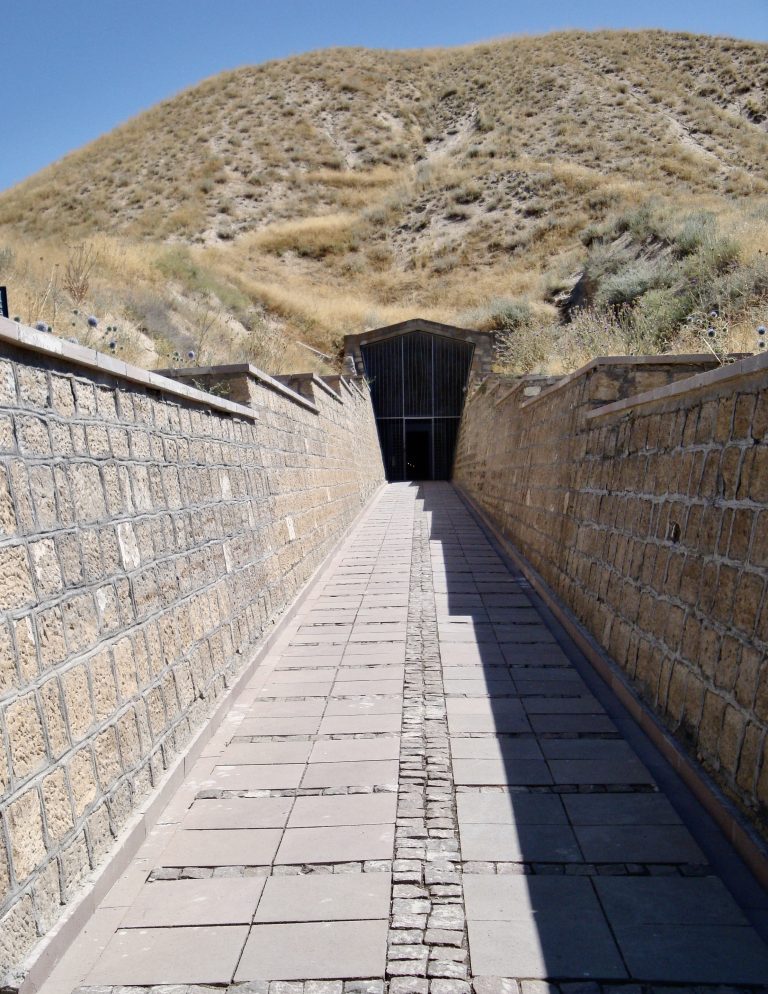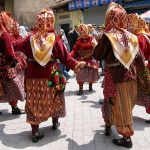Burial site of King Midas
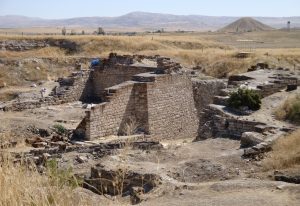 Near the village of Yassıhöyük, roughly one hour’s drive west of Ankara, stand the remains of the Phrygian city of Gordion and its necropolis which consists of around 80 burial mounds.
Near the village of Yassıhöyük, roughly one hour’s drive west of Ankara, stand the remains of the Phrygian city of Gordion and its necropolis which consists of around 80 burial mounds.
A visit to the site should involve a look first at the Great Tumulus and the museum facing it across the road followed by a stroll down the road to inspect the ruins of ancient Gordion.
You can easily see everything on a day trip from Ankara. However, to make more of the experience you might like to spend the night in nearby Polatlı which has a reasonable choice of hotels.
Great Tumulus
Standing 53 meters high, the Great Tumulus (AKA the Midas Mound) is the largest of the many similar mounds that dotted the surrounding plain. Its size always suggested that it must contain the remains of someone especially important, and King Midas was far and away the best known of the rulers of Phrygia, the kingdom that had covered much of this area between 1100 and 300 BC.
Unfortunately according to Greek and Assyrian sources, the real King Midas seems to have lived in the late 8th century BC, and it’s now thought more likely that the man buried inside the Great Tumulus was Gordias, the king who laid the foundations for the city of Gordion in the 9th century BC.
Today you can walk right into the heart of the tomb where a chamber of juniper and pine protected his body. The most important finds from the site are on display in the Museum of Anatolian Civilisations in Ankara. 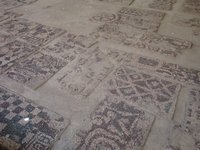
The museum
A small museum across the road from the tumulus houses finds from the ruins of Gordion as well as a reconstruction of what the tomb’s interior would have looked like.
Perhaps the most impressive items on show are the painted terracotta tiles and drains which once adorned the second Phrygian citadel. These include panels that show a pair of leopards, and a pair of goats nibbling leaves from a tree, and suggest a city of great beauty and sophistication which is hard to imagine from the bare bones of the site itself.
Ancient Gordion
The remains of Gordion itself lie two km down the road from the mound. Archaeologists from the University of Pennsylvania have been working here since the 1950s and have uncovered two main Phrygian citadels, the second built directly on top of the first which had been destroyed by fire.
At this little visited but hugely important site they have uncovered a number of megarons, or great halls, one of which was laid with a black-and-white pebble mosaic floor, dating back to the 7th century BC, the oldest ever found in Anatolia (it’s now on display in the museum in Yassıhöyük).
To non-specialist eyes their most striking find was a huge gate complex set into walls 10m high and dating back to the 9th century BC. This complex, the oldest known from Iron Age Anatolia, was able to survive almost intact because the gate into the second citadel was built virtually on top of it. Today you can walk right round the perimeter of the excavations which have been provided with modern interpretation boards.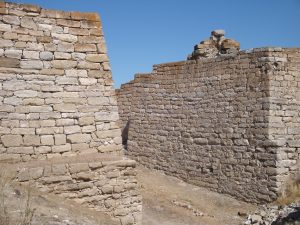
The Gordian Knot
It was presumably somewhere amid these ruins that Alexander the Great cut the famous Gordion Knot., a complex knot that secured the ox-cart in which King Gordias had first ridden into town and which was preserved in a local temple. Legend had it that the next Master of Asia would be the man who could untie it. Frustrated at his failure to do this, Alexander slashed the knot with his sword in 334 BC and went on to rule much of Asia. When he died aged only 33 there were those who attributed his early demise to the fact that he had cheated.
Other Phrygian sites to visit
Pessinus (Ballıhisar)
